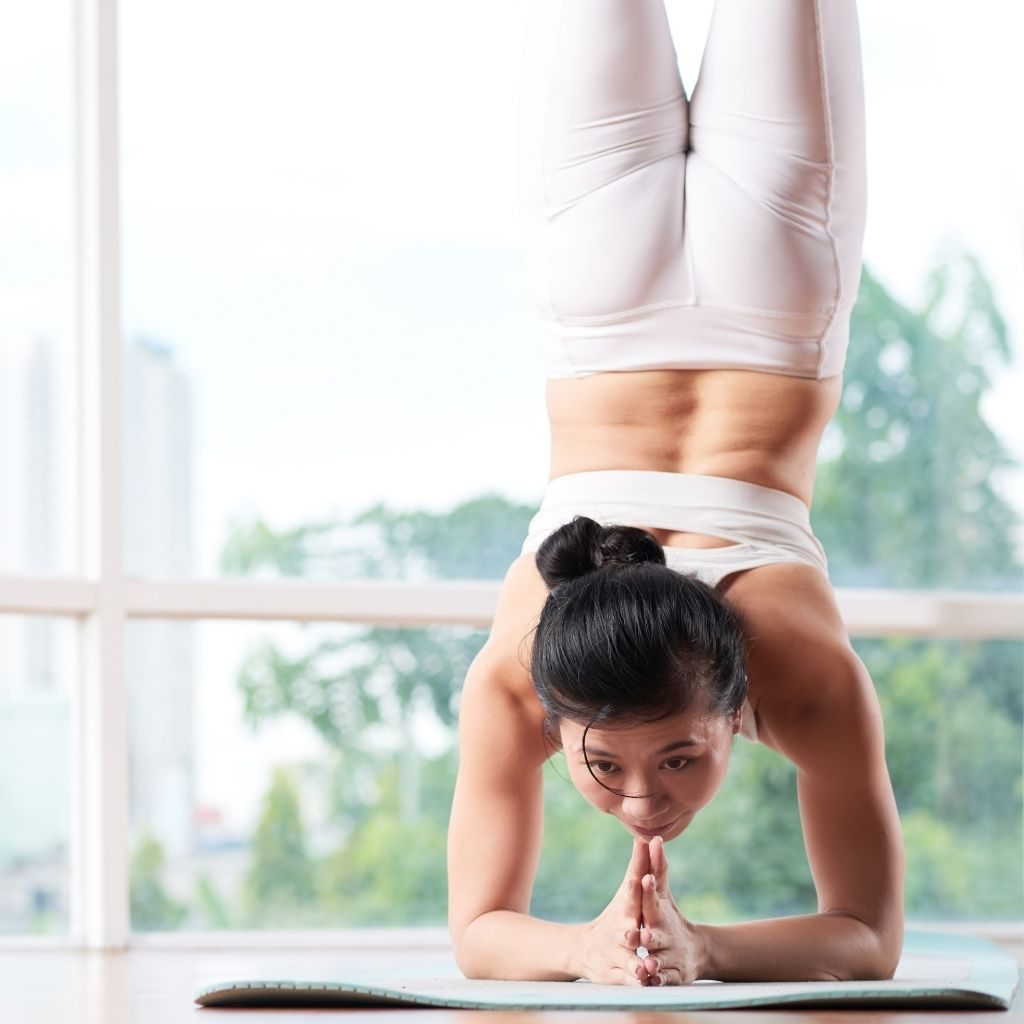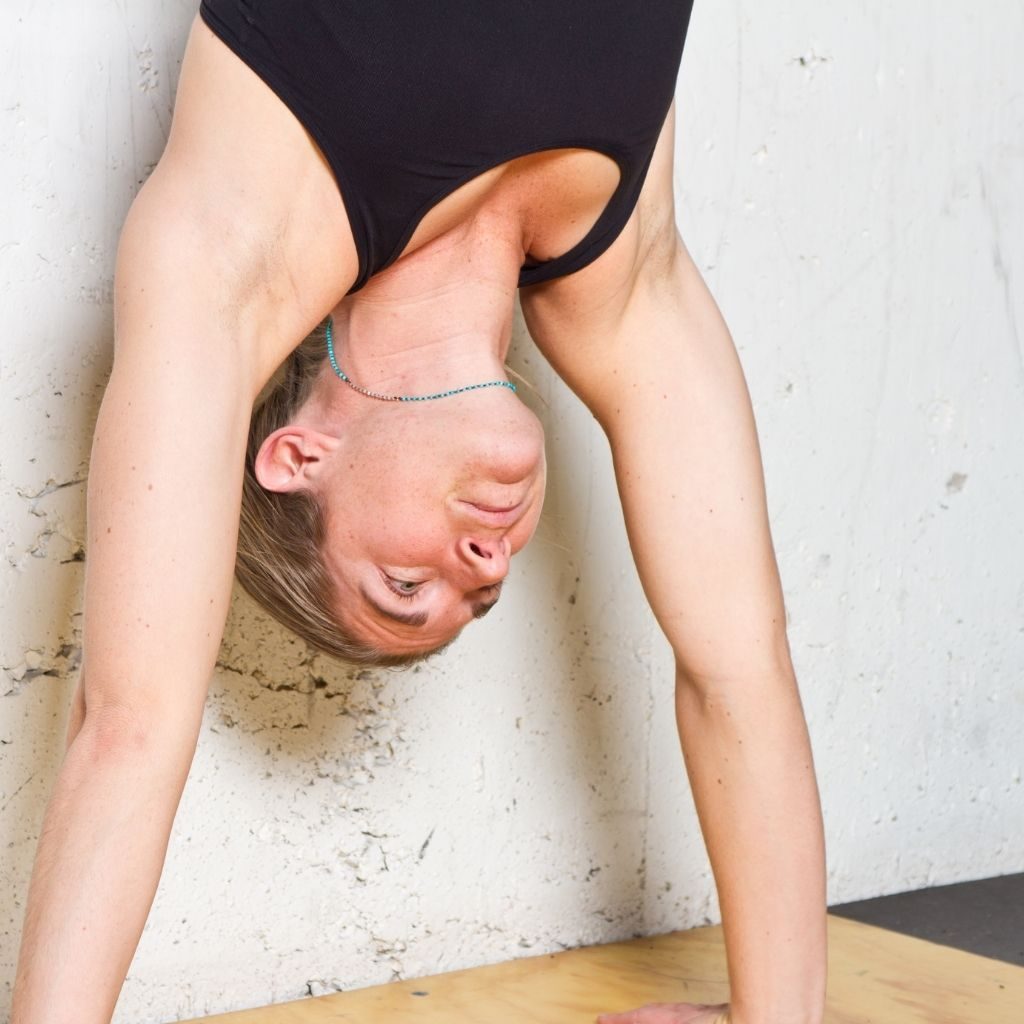Are Handstands Bad For Your Brain? (+ Things to Keep in Mind)
Handstands are common amongst yoga practitioners. The position is necessary for strengthening the core. But with the added pressure on the arms and head, you may wonder how they affect your brain.

Handstands are not bad for your brain. They replenish the blood supply of the brain and are beneficial in preventing such diseases as Alzheimer’s. If practiced regularly, handstands can improve your overall brain health but should be avoided if you have high blood pressure, glaucoma, detached retina, seizures, or other brain-related concerns.
Doing a handstand improperly can cause a neck tear. You should take handstands in small steps, know your limits, and how to fall safely.
Besides strengthening your core, what are the other benefits of handstands?
This article will go over the positive effects that handstands can have on your brain and how to ensure that you’re practicing them correctly.
Handstands create better blood circulation
A handstand inverses gravity’s action, increasing blood circulation in the brain. The rejuvenated blood replenishes brain cells to perform body functions better.
Handstands change the circulation habits of the blood. This is beneficial to all body parts, but mostly the brain.

Handstands provide more oxygen to the brain
Handstands stretch the diaphragm, which increases the intake of oxygen. The surplus oxygen in the lungs benefits the brain and other parts of the body.
Doing handstands regularly can improve your breathing habits and your body’s distribution of oxygen.
Handstands can improve memory
With greater blood flow to the head comes greater brainpower. Handstands deliver rejuvenated blood to the hippocampus, which improves your memory, allowing you to receive and store information better. The hippocampus is associated primarily with learning and memory.
Handstands are therefore recommendable if you suffer from brain fog or regular memory loss. Handstands will help you to think lucidly and store memories more easily.
Wanna know more? 👉 Here Does Yoga Increase IQ? (Answered!)
Handstands can reduce anxiety
A handstand can reduce the release of cortisol which reduces anxiety. Cortisol is the hormone associated with stress. Handstands cause tensions to dissipate and muscles to relax in the brain.
Handstands are linked to greater mental clarity, stronger memory, and the alleviation of stress and anxiety.
Fewer stress hormones are formed with a greater blood flow in the brain.

What you may feel when you are practising handstands
When you practice a handstand, you may feel dizzy, have minor pressure in the head, and have a headache.
The most important thing in yoga is getting the positions correct.
Particularly with handstands, a wrongly positioned arm could cause damage to your neck and potentially your brain.
Here is a list of common symptoms in people who regularly practice handstands and whether or not you should worry about each.
Initial dizziness
If you feel dizzy while performing a handstand, what you are experiencing is vertigo. Your brain is processing what you’re seeing while adjusting to the blood pressure inversion.
You are likely to feel dizzy while performing a handstand, no matter your level of experience. Dizziness is a natural head reaction to being upside down.
Persistent dizziness may cause concern, but it could be vertigo most of the time.
Headaches
If the headache feels particularly abject or is irregularly persistent, it may be caused by a poorly held yoga move. Headaches can easily be triggered by the neck and head pressure. Be wary of this.
Some people experience headaches while doing a handstand, which is caused by blood inversion. This is natural, particularly if you have regular bouts of headaches.
Minor pressure to the head
If you feel painful pressure in your head while performing a handstand, you are most likely performing the pose wrong.
During a handstand, you may feel your head, temples, and face straining from carrying the weight of the entire body. But handstands should not cause too much pressure on any area of the head.
A red face
When doing a handstand, the inverted blood flow will turn your face red. This will happen the first couple of times you perform a handstand. Turning crimson in the face is a natural body reaction to your heart suddenly being positioned above your head.
Turning red is a guarantee throughout your early tries at performing a handstand.
Over time, your head will become better adjusted to this transition.
Do not panic if it doesn’t, however!

Can you damage your brain by doing too many handstands?
Too many handstands can damage your upper spine. It’s best to limit yourself to 4 to 5 handstands a week for 5 to 10 minutes.
Although uncommon, there are exceptions to the fact that handstands are good for your brain.
When handstands are performed incorrectly or practiced while you have a medical issue like glaucoma, seizures, high blood pressure, whiplash, detached retina, and epilepsy, handstands can damage your brain or cause further deterioration to your condition.
Brain damage caused by doing handstands incorrectly
Adding too much pressure to the neck can tear arteries and cause blood clots in the brain. But a lot of the brain injuries that are linked to handstands in yoga are caused by poorly executed moves.
In yoga, your body is positioned unnaturally.
Yoga moves are designed to create the least amount of pressure on your body as possible.
If a move is done slightly incorrectly, it can cause damage to your neck and brain.
The vertebrates in your neck are much smaller than the ones found elsewhere in the body. They are there to support your body in its natural position – from the neck up. They are not used to supporting almost your entire body weight.
For this reason, yoga moves need to be executed properly.
You may also like: Yoga for Fat People: Can Overweight People Practice Ashtanga?
Brain damage caused by handstands due to previous head injuries
Avoid handstands if you have high blood pressure, spinal issues, or you are recovering from brain injuries.
As much as causing a blood inversion in your body poses many benefits, it is not recommendable for people suffering from blood-related conditions or head trauma or injury.
If you suffer from any of the above, you should also avoid headstands and shoulder stands.
You may also like: Does Ashtanga Yoga Help You Lose Weight? Calories Burnt & Best Poses

Precautions to take when doing handstands
To avoid doing yoga poses incorrectly and ensure that you get maximum results from performing handstands, abide by these precautions.
Have sufficient core strength to perform a handstand
Regularly perform crunches and other core strength exercises before you start practicing handstands. With a base core, you’ll be able to coordinate and perform handstands with balance and accuracy, ensuring the avoidance of brain injury.
Although handstands are all about increasing your core strength, not having enough core strength will guarantee poorly performed handstands.
When you’re pregnant, avoid handstands because you could easily fall.
Get a professional’s opinion
If you are unsure whether or not you are doing a handstand properly, get someone to watch you do it – preferably a professional – to comment on your form and offer suggestions.
The risk of sustaining a head injury while performing a handstand rests on whether or not you are performing the position accurately.
Perform handstands in stages
Start by using props and walls to perform handstands. Gradually move towards doing it on your own once your body is used to the motion and distribution of weight.
Without understanding what muscles are at play and how to balance your body, you are guaranteed to incur some head injuries when performing handstands.
Don’t jump right into performing handstands without first working out how the motions work.
Know your limits
As soon as you feel your body starting to strain and resist, move out of the position and try something different.
Many handstand-related head injuries are caused by individuals holding a position for longer than their body can manage.
Yoga moves, particularly handstands, put your body through unnatural motions. It’s natural for your body to fight against what it is not used to eventually.
Know how to fall safely
To avoid head injury when coming out of a handstand, either exit sideways and pirouette, or return to your original standing position by falling back onto your feet.
Injuries to the brain can be caused by incorrectly falling from a position.
Position your head correctly
The most common handstand head positions are peeking, head out, and head in. By following one of these positions you will ensure that your head is free from injury.
Head positioning during a handstand is open to interpretation and depends upon what specific yoga handstand you are performing, and what is comfortable to you.
You may also like: Is Ashtanga Yoga Bad for Your Back? (All You Need to Know!)
Conclusion
Contrary to popular belief, handstands are not bad for your brain. In fact, they pose many health benefits to your brain health, including increasing blood and oxygen circulation while also reducing anxiety and confusion.
Regularly performing handstands can greatly improve your brain’s physical and mental health and even reduce the threat of such diseases like Alzheimer’s from materializing.
Rare incidents of brain damage caused by handstands are often the fault of poor yoga positioning or other head injuries.
To avoid injury to the brain when performing handstands, execute all positions properly and don’t strain yourself while doing them.

